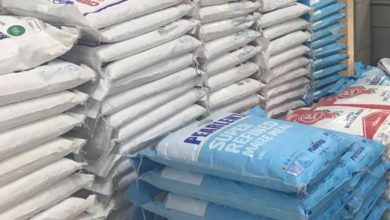ZCDC urges positive media coverage to boost sales

Since consumer perception drives the sale of diamonds globally, the Zimbabwe Consolidated Diamond Company (ZCDC) has urged local media to publish positive stories about the country’s diamond industry, arguing that journalists can influence consumer spending patterns.
Zimbabwe’s diamond sector was once shrouded in controversy, as previous reports revealed how police and army maintained their grip on Chiadzwa or Marange using brutal methods there, while political elites controlled and secretly exploited the ‘lucrative resource,’ while concealing the scale of loss to citizens.
This caused human rights activists to ask the Kimberley Process Certification Scheme, an international diamond industry group which Zimbabwe was part of to suspend the country.
However, the diamond industry, according to ZCDC officials, provides a telling example of how marketing, societal norms, and the power of storytelling can significantly shape and enhance the perceived value of the ‘dazzling’ resources to global markets.
“Negative perceptions of Zimbabwe’s diamond mining affect the value because diamond sales involve much more than mining investment,” said ZCDC Mine Manager Admore Mangoma, who was representing ZCDC Chief Executive Officer Dennis Mtombeni at a media workshop on responsible diamond mining reporting conducted in Mutare on Tuesday.
Mangoma stated that the media plays a pivotal role in creating awareness and knowledge about the diamond industry in Zimbabwe.
“Perception plays an instrumental role in determining the diamond’s and how the diamond mining is perceived shapes its valuation. Therefore, awareness of diamonds creates the platforms for social license. When the public is made aware of the positive strides in the industry it promotes the sector and enhances our stakeholder relations,” he said.
ZCDC Finance and Business Analyst, Albert Norumedzo explained that the sale of diamonds involved a marketing, societal change and shifting perceptions because consumers were concerned about the value of the ‘sparkling stones’ and how they were mined.
“We are selling a resource that besides being worn does nothing else, save for a few functions. The diamond industry itself is about class, jewellery, perception – where people who have money want to spend it on value,” he said.
“The largest consumers of diamonds are in the United States (US) and these are also the largest consumers of information that shapes perception. They are quick to process and act on that information. Once they pick up an article that this is happening in Zimbabwe, they act on that because they have liberalism and freedom to express that they don’t want Zimbabwean diamonds because of a,b,c.”
Norumedzo stated that the competition of laboratory-created synthetic diamonds, scrutiny of how countries especially those in Africa mined diamonds, and shifting attitudes necessitated the need for positive diamond narrative coverage.
“We cannot emphasise the role of positive media coverage in shaping consumer spending patterns. Media has an agenda-setting role and can shape society by determining what people think. Imagine the positive news about Africa or Zimbabwe’s diamond industry. This will create the platform for good brand equity, better prices and make inroads into other markets,” said the business analyst.
“The only thing that stops us from mining our diamonds, cutting, polishing and taking it to the US or wherever is the perception that is attached. We can’t shake it but need correct perceptions so that a person in the US will walk into a shop and say they want to buy diamonds from Zimbabwe or Africa.”
Norumedzo said media plays a large significant component of diamond consumption.
“50 percent of the US$40 billion market share ends up in the US, five percent in Japan, 16 percent in China, whereas their economy grows most people have the muscle to take up diamonds. Geographic segmentation where markets are exploration and evaluation of diamond production,” said the business analyst.
“65 percent in the US$15 billion value chain are rough diamonds coming from Africa. In terms of sales, Dubai doesn’t mine a single diamond but right now almost 80 percent of rough diamonds are sold in Dubai, as they have put up infrastructure, markets and all the enabling facets to move industry forward.”
Norumedo said producers of natural diamonds were now competing with synthetic diamonds produced in laboratories where there was no involvement of ‘disturbing’ the environment.
He added that natural diamond producers have to appeal to consumers that they are “mining diamonds responsibly, generating jobs and not harming the environment and that if that message is not told, a buyer will think differently and purchase synthetic diamonds.”






